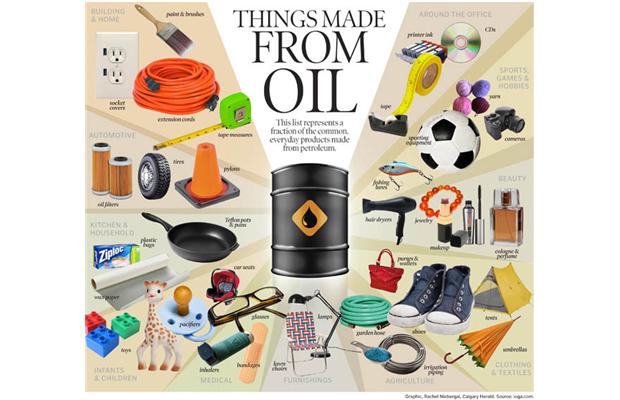As demand grows every day, the challenge to provide enough energy can be daunting. Just by the end of the 21st century, the global energy consumption is predicted to triple. In order to prevent an increase of global temperature by more than 2 degrees, the world’s energy emissions have to be limited to nearly 0 by 2050. That is why in the last few years, companies have turned their focus on clean and abundant sources of energy – the sun and wind. However, these outlets aren’t ready to transform the way we live.
According to the International Energy Agency (IEA), even as the world embarks on a low carbon pathway to meet climate change commitments, oil and gas will still be an integral part of everyday life for decades to come. The IEA expects demand for oil to grow to 103.5 million barrels of oil per day (mb/d) in 2040, compared to 92.5 mb/d in 2015 – an increase of 11%.
How many times a day are we interacting with products made possible by the oil and gas industry?
- You might use natural gas to cook your food, but you probably use more oil and gas products in your kitchen that you realize. Your non-stick pan is made possible by the industry, as are your plastic containers, detergent to clean those containers, and the plastic bottles holding your drink. Even your synthetic counter top and vinyl floor are made from oil and gas contributions.
- If you are reading this article on your computer or smart phone from the comfort of your upholstered sofa, you are using oil and gas products. Your TV is also touched by the industry, as is the insulation in your home, your sound system, lamp shades, lotions, lipsticks, and the paint covering your walls.
Alternative Energy
Solar and wind energy depends highly on the weather in the area, which makes them unreliable for the steady energy production required for the base load power plants. Also, sun and wind are free, but the process of capturing their energy is not. To produce one unit of concentrated energy from these sources requires the use of specific materials to capture and convert their diluted energy.
The development of new and more efficient solutions when it comes to solar and wind energy storage is an on-going process, as there is still a plenty of space for improvement. Until then, the safest way to transport the fuel we need remains to be pipelines.


